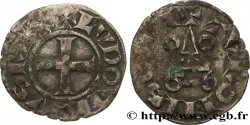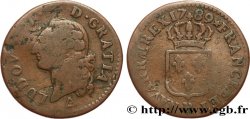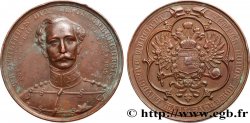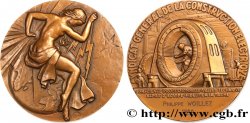E-auction 545-470817 - fjt_858305 - DAUPHINÉ - MÉDAILLES ET JETONS DU XIXe s. Jeton Al 37, Société d’électro-métallurgie française Brignoud n.d.
Devi Sign-in ed essere un offerente approvato fare un'offerta, Login per fare offerte. Conti sono soggetti ad approvazione e di approvazione sono raggiunti entro 48 ore. Non aspettare fino al giorno di una vendita si chiude per registrarti.Confermando la tua offerta su questo oggetto ti impegni ad un contratto legalmente vincolante per l'acquisto di questo prodotto e fare clic su «offerta» costituisce accettazione dei termini di utilizzo de e-auctions cgb.fr.
Offerta deve essere collocato in euro gli importi interi vendita only.The si chiuderà al momento sulla descrizione dell'oggetto, eventuali offerte pervenute al sito dopo l'orario di chiusura non verranno eseguite. Volte transmition possono variare e le offerte potrebbero essere respinto se si attende per gli ultimi secondi. Per ulteriori informazioni ckeck le FAQ.
SENZA COSTI PER GLI ACQUIRENTI.
SENZA COSTI PER GLI ACQUIRENTI.
| Valutazione : | 25 € |
| Prezzo : | 3 € |
| Offerta maxima : | 11 € |
| Data di fine vendita : | 25 settembre 2023 19:22:20 |
| partecipanti : | 2 partecipanti |
Tipo : Jeton Al 37, Société d’électro-métallurgie française Brignoud
Data: n.d.
Metallo : alluminio
Diametro : 37 mm
Asse di coniazione : 12 h.
Peso : 4,30 g.
Orlo : lisse
Marchio : sans poinçon
Commenti sullo stato di conservazione:
Brillant visible. Présence de coups et rayures
Diritto
Descrittivo diritto : Allégorie du travail (la France ?) assise de dos vers la gauche ; derrière elle Mercure assis au-devant de générateurs électriques ; à l’exergue signature E. DROPSY.
Rovescio
Titolatura rovescio : SOCIÉTÉ ÉLECTRO-MÉTALLURGIQUE FRANÇAISE// * FROGES PAR BRIGNOUD (ISÈRE) * AU CENTRE EN QUATRE LIGNES : ALUMINIUM/ PUR/ ET/ ALLIAGES.
Descrittivo rovescio : Couronne de laurier, au centre en quatre lignes : ALUMINIUM/ PUR/ ET/ ALLIAGES.
Commento
L’aluminium est au XIXe siècle, avant de connaître un succès considérable au XXe siècle, un métal rare et très cher à produire à ses débuts : il est isolé pour la première fois en 1825 par le chimiste danois Hans Christian ŒRSTED, grâce à une réaction chimique avec un amalgame au potassium. Entre 1827 et 1845, le chimiste allemand Friedrich WOHLER est le premier à mesurer la densité de l'aluminium et à montrer sa légèreté. En France, Henri Sainte-Claire Deville expose de l'aluminium pur à l'Exposition internationale de Paris en 1855. En 1887, la création de la Société Électrométallurgique Française permet l’ouverture d’une usine à Froges dans l'Isère, équipée des premières cuves de fabrication industrielle d'aluminium électrolytique.
In the 19th century, before experiencing considerable success in the 20th century, aluminum was a rare and very expensive metal to produce at the beginning: it was isolated for the first time in 1825 by the Danish chemist Hans Christian ŒRSTED, thanks to a chemical reaction with a potassium amalgam. Between 1827 and 1845, the German chemist Friedrich WOHLER was the first to measure the density of aluminum and to demonstrate its lightness. In France, Henri Sainte-Claire Deville exhibited pure aluminum at the International Exhibition in Paris in 1855. In 1887, the creation of the Société Électrométallurgique Française allowed the opening of a factory in Froges in Isère, equipped with the first vats for the industrial production of electrolytic aluminum.
In the 19th century, before experiencing considerable success in the 20th century, aluminum was a rare and very expensive metal to produce at the beginning: it was isolated for the first time in 1825 by the Danish chemist Hans Christian ŒRSTED, thanks to a chemical reaction with a potassium amalgam. Between 1827 and 1845, the German chemist Friedrich WOHLER was the first to measure the density of aluminum and to demonstrate its lightness. In France, Henri Sainte-Claire Deville exhibited pure aluminum at the International Exhibition in Paris in 1855. In 1887, the creation of the Société Électrométallurgique Française allowed the opening of a factory in Froges in Isère, equipped with the first vats for the industrial production of electrolytic aluminum.








 Segnalare un errore
Segnalare un errore Stampate la pagina
Stampate la pagina Condividi mia selezione
Condividi mia selezione Fai una domanda
Fai una domanda Consegnare / vendere
Consegnare / vendere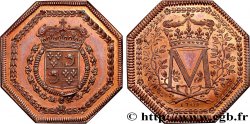
 Descrittivo
Descrittivo
